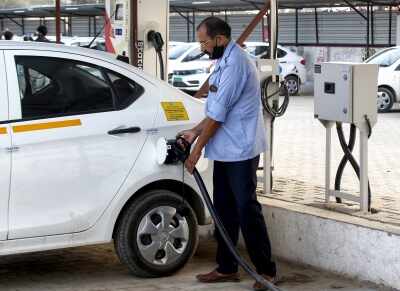New Delhi, 6 May (IANS). The number of electric vehicles (EV) in India is going to increase rapidly. The country’s roads are estimated to be 123 million EVs by 2032. This information was given in a latest report on Tuesday.
According to a report by India Energy Storage Alliance (IESA) and Customized Energy Solution (CES), EVs need to adopt Sustainable Development and Net Zero Emissions by 2070. The adoption of EV can strengthen India’s economy and at the same time by 2030 it will be helpful in achieving the target of 30 percent of EVs.
The report estimates that India’s cumulative on-road lithium-ion electric vehicles (EV) have increased by about twelve times, which has increased from 0.35 million in 2019 to 4.4 million in 2024.
This rapid growth has been encouraged by auxiliary government policies, such as the FAME-2 scheme. The scheme provides demand-based incentives for capital subsidy for public charging infrastructure as well as electric two-wheelers, three-wheelers and four wheelers.
The report further stated that in 2024, India’s on-road EV stock will have more than 93 percent of electric two-wheelers and three-wheelers.
In contrast, electric four -wheelers represented about 6 percent, while electric buses and trucks had less than 1 percent.
IESA President Debamalya Sen said, “To support the estimated EV growth, we can guess that India’s cumulative installed EV charging point, public and captive, will need to increase by about 12 to 28 times, which will increase from 76,000 to 2032 in 2024 to 2032 and 2.1 million.”
Sen said that the installed charging capacity would also have to increase more than 17 times, depending on the level of EV adoption and the use of infrastructure, it would increase from 1.3 gigawatt to 23 gigawatts.
CES Managing Director Vinayak Walimbe said that by 2032, IESA and CES estimate that India’s on-road EV stock could reach around 49 million (worst position), 60 million (business-ed-use) or 123 million (NEV landscape).
According to the report, in 2024 there were about 2,20,000 personal electric for-wheelers (E4W) on the roads, most of which depended on the Type-2AC charger installed in residential areas.
Till the same year there were estimated 3,20,000 private type-2 AC charger in India, out of which 70 percent were classified as 3.3 kW units, 28 percent 7.4 kW units and the remaining 11-22 kW units as high capacity.
-IANS
SKT/ABM










